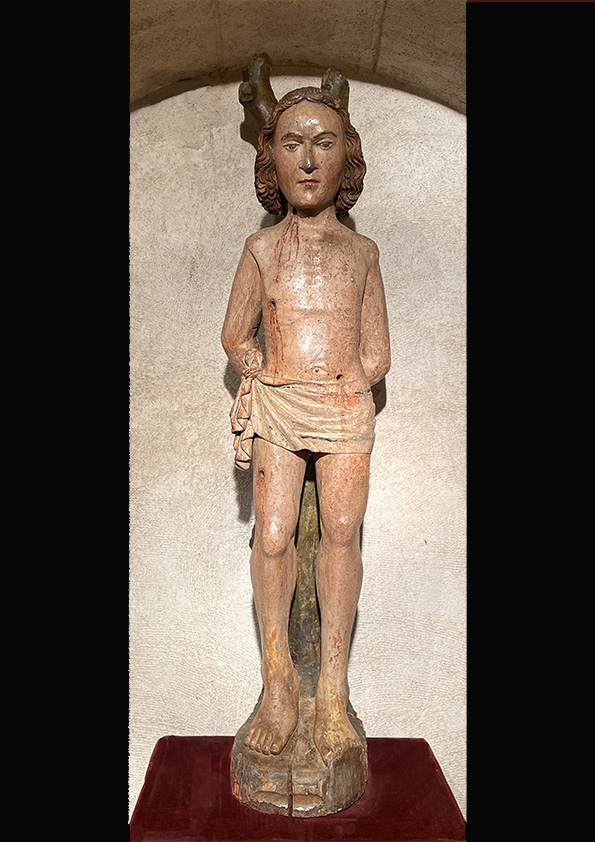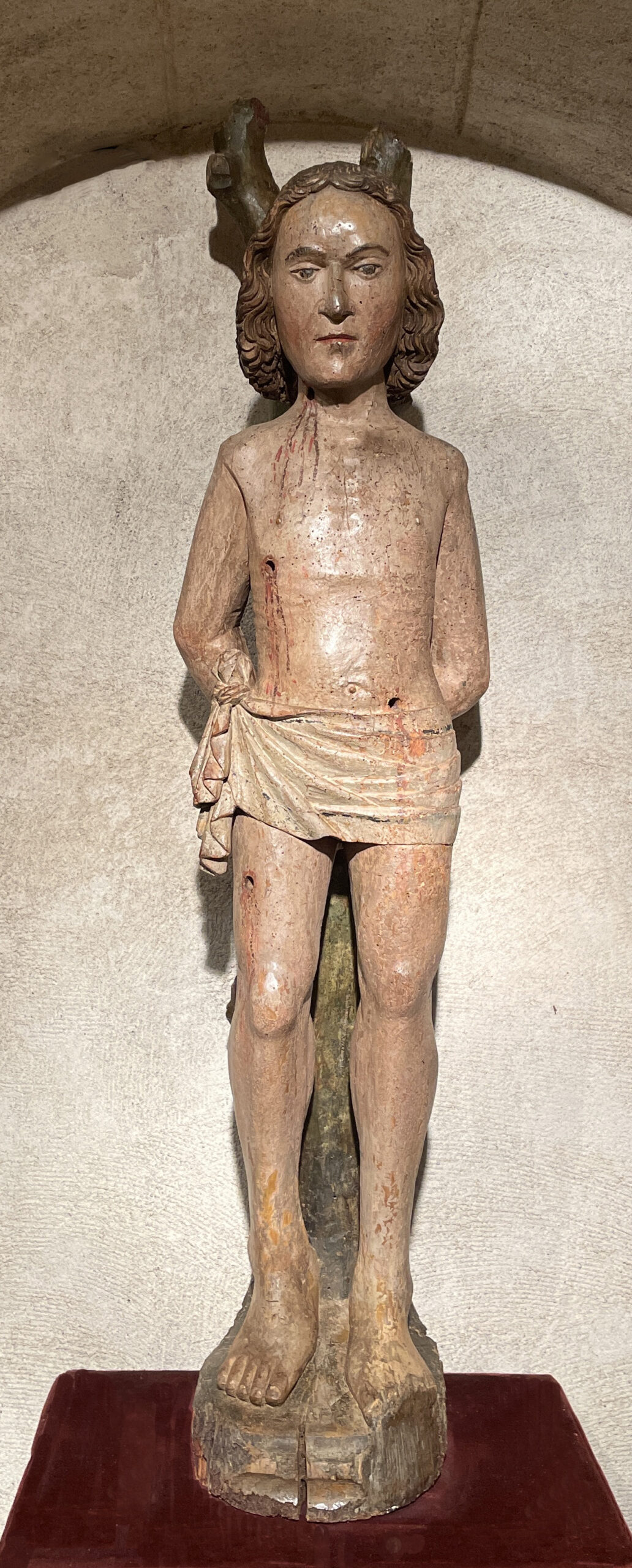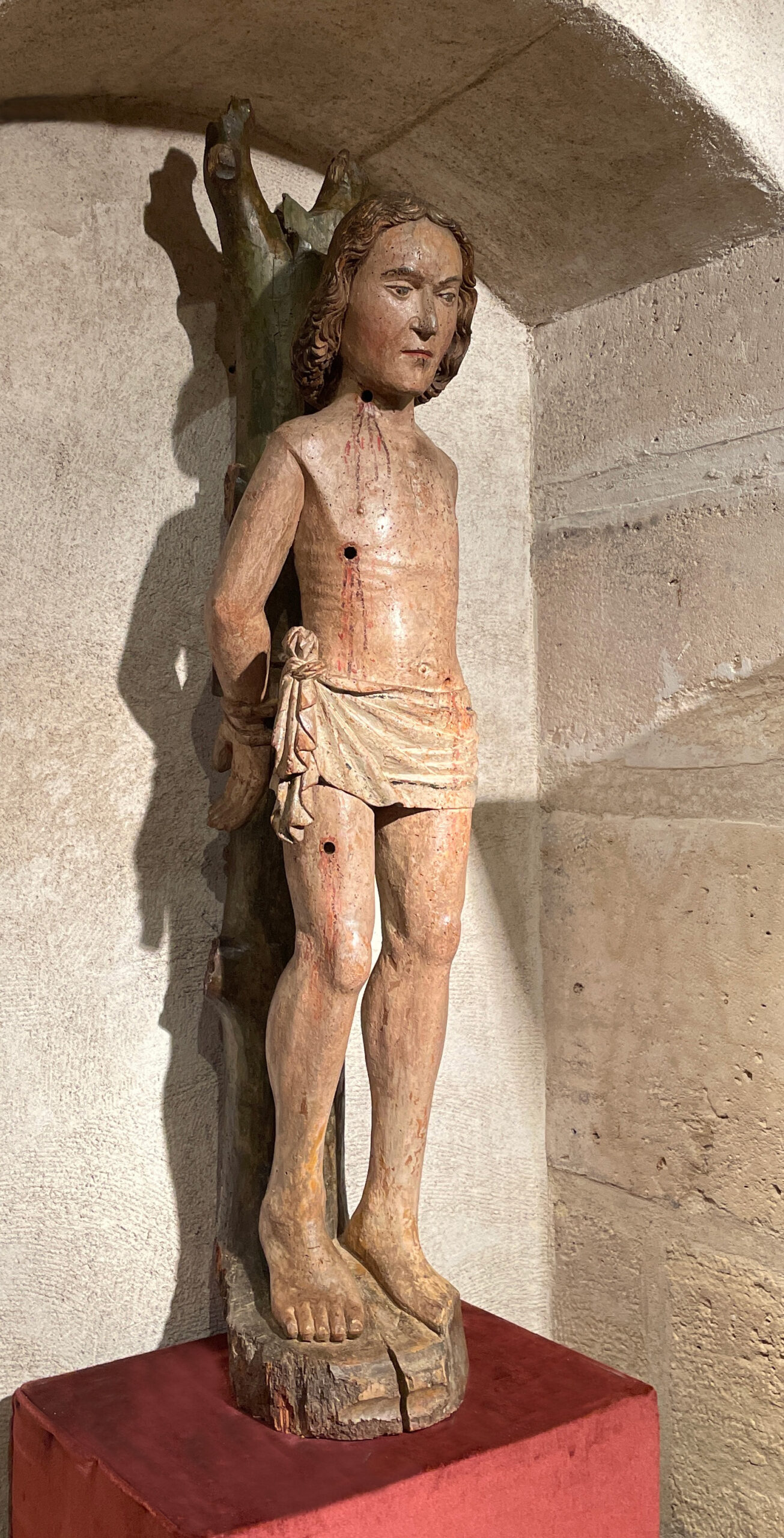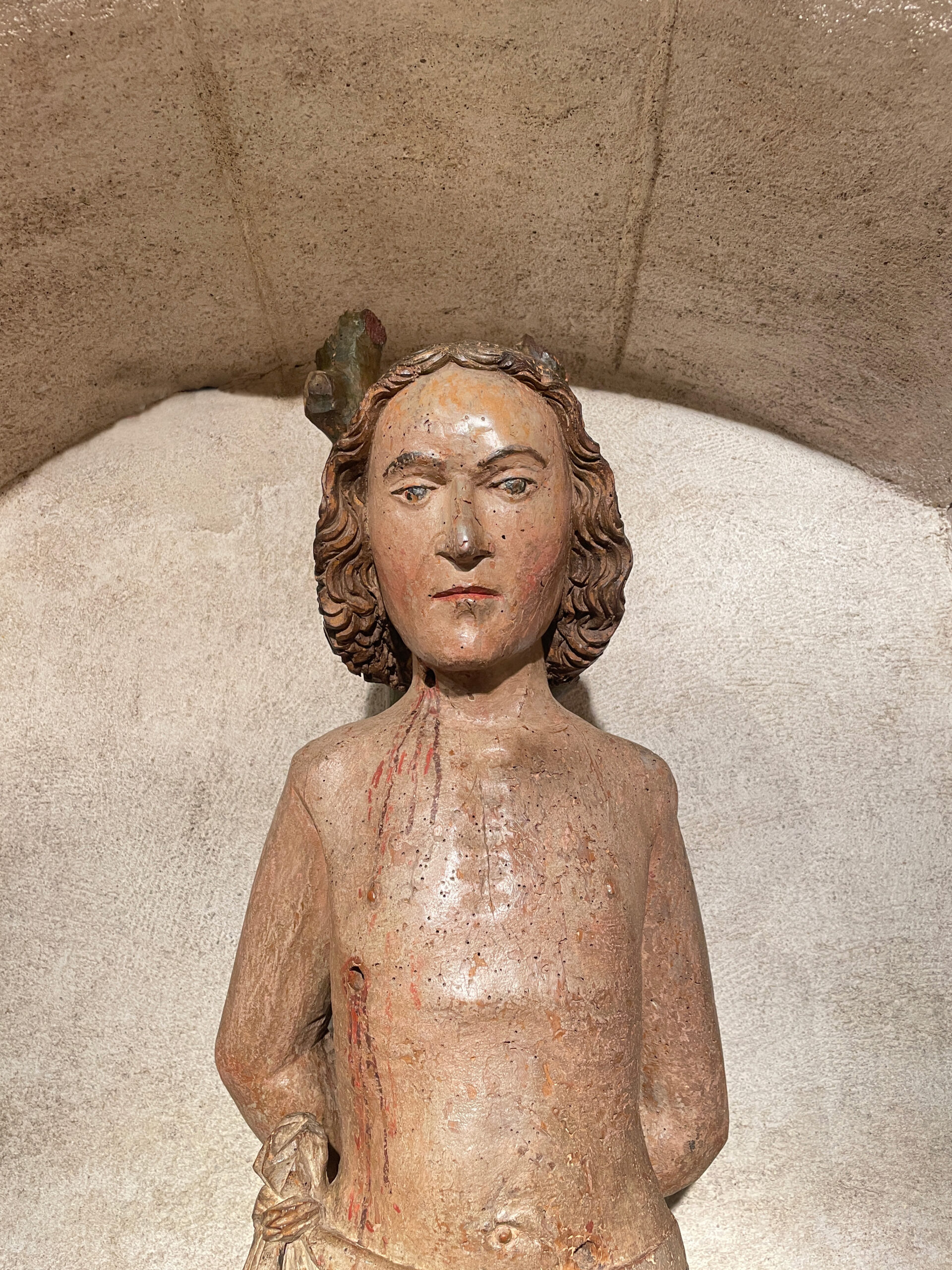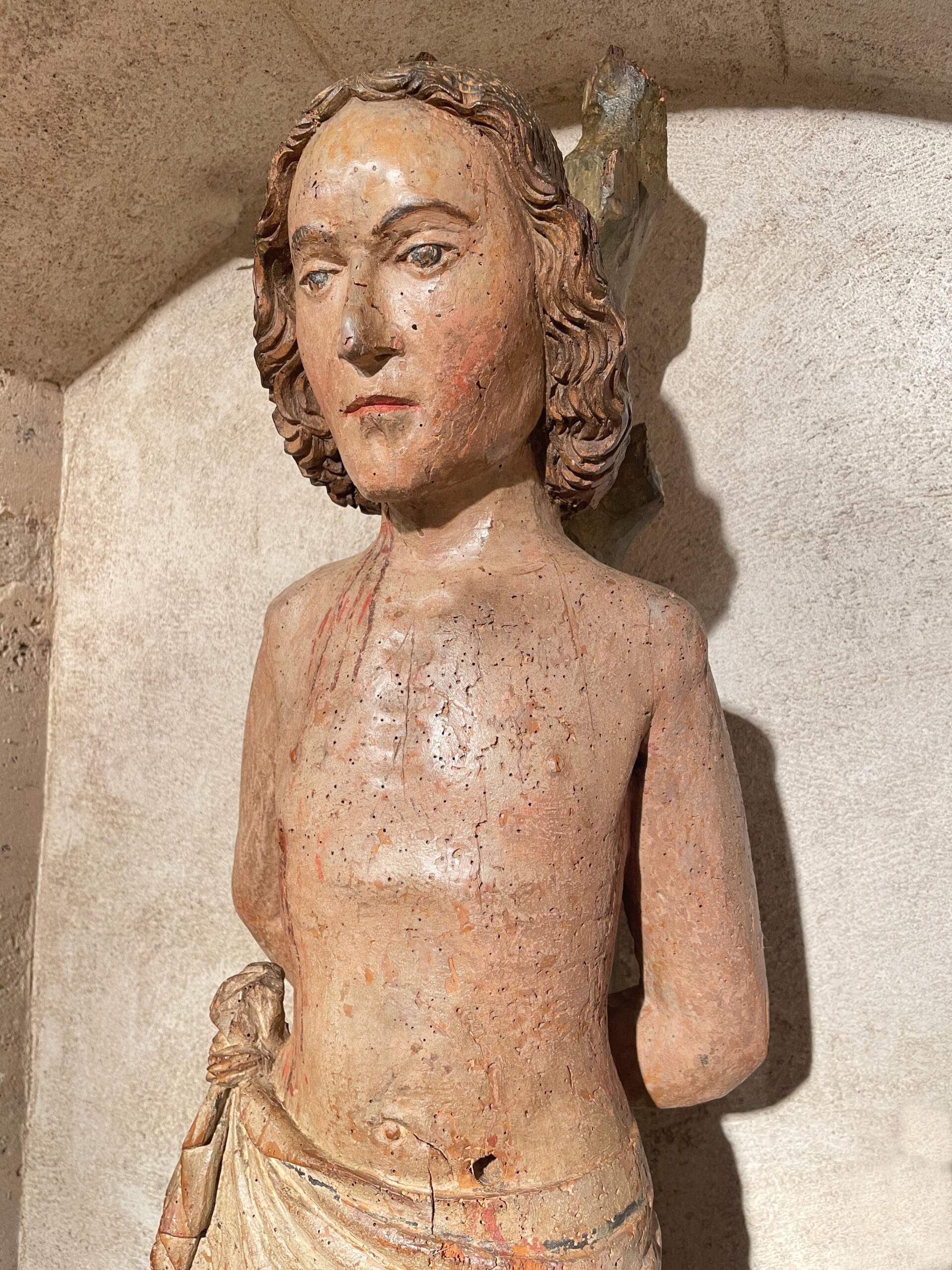Description
ICONOGRAPHY
According to legend, Sebastian, born in Narbonne, was a centurion of the first cohort under the reign of Diocletian. He was denounced for urging his young friends, Mark and Marcellian, to remain steadfast in their faith. On Diocletian’s orders, he was tied to a post in the middle of the Campus Martius and pierced by the arrows of the emperor’s archers.
However, he did not die and recovered his health thanks to the widow Irene, who tended to his wounds and saved his life. `
Once healed, he went to the palace and reproached Emperor Diocletian for persecuting Christians. Furious, the emperor had him killed with clubs.
DESCRIPTION
Carved in the round and polychromed in limewood. As is most depicted in iconography, Saint Sebastian is shown standing, leaning against a tree, with his arms tied behind his back. His face is framed by large, well-defined curls of medium-length hair.
Nude, he wears a delicately pleated loincloth, tied at the side of his waist.
His face, with its refined modeling, does not lack expressiveness. With furrowed brows and a downward but distant gaze, he seems deeply rooted in his faith. Far from being resigned, he embodies a fervent Faith.
The formal repertoire is typical of South German sculpture. The treatment of the tree and the saint’s anatomy, with his prominent and slightly rigid ribs, suggests dating this work to the late 15th century.

